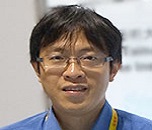Session and Tracks
Track 1: Data Science
Data science involves extracting insights and knowledge from data using techniques from statistics, mathematics, and computer science. It combines data analysis, machine learning, and data visualization to solve complex problems and support decision-making. Data scientists collect, clean, and analyse data to identify patterns, trends, and correlations, often using tools and programming languages like Python and R. The goal is to turn raw data into actionable insights that drive strategic business or research decisions.
Related Conferences: Deep Learning Conferences 2024 | Artificial Intelligence Meeting | Data Science Congress | Data Science Conferences | Computer Vision Summit | Data Analysis Workshops | Material Science Conference 2024 | Bioinformatics | International Conference on Machine Learning
Related Worldwide Associations and Societies: American Statistical Association | International Data Science and Analytics Society | European Association for Data Science | Data Science Global Impact Forum | Data Science Association | International Data Engineering and Science Association | European Data Science Academy
Track 2: Generative AI
Generative AI models are advanced algorithms designed to create new content, such as text, images, music, or code, by learning patterns from existing data. Popular examples include GPT (for text) and DALL·E (for images). These models use deep learning techniques like transformers to generate outputs that resemble the original training data. They are widely used in content creation, design, and creative industries, enabling AI-driven innovation and automation.
Related Conferences: Deep Learning Conferences 2024 | Artificial Intelligence Meeting | Data Science Congress | Data Science Conferences | Computer Vision Summit | Data Analysis Workshops | Material Science Conference 2024 | Bioinformatics | International Conference on Machine Learning
Related Worldwide Associations and Societies: American Statistical Association | International Data Science and Analytics Society | European Association for Data Science | Data Science Global Impact Forum | Data Science Association | International Data Engineering and Science Association | European Data Science Academy
Track 3: AI Ethics and Responsible AI
This ensures that artificial intelligence systems are designed and deployed in ways that are fair, transparent, and accountable. This involves addressing biases in AI models, safeguarding user privacy, and considering the societal impact of AI technologies. The goal is to create systems that not only perform effectively but also align with ethical standards and contribute positively to society.
Related Conferences: Deep Learning Conferences 2024 | Artificial Intelligence Meeting | Data Science Congress | Data Science Conferences | Computer Vision Summit | Data Analysis Workshops | Material Science Conference 2024 | Bioinformatics | International Conference on Machine Learning
Related Worldwide Associations and Societies: American Statistical Association | International Data Science and Analytics Society | European Association for Data Science | Data Science Global Impact Forum | Data Science Association | International Data Engineering and Science Association | European Data Science Academy
Track 4: Federated Learning
Federated Learning is a decentralized approach to machine learning where multiple devices collaboratively train a model without sharing their local data. Instead of sending raw data to a central server, each device trains the model locally and only shares updates (like model weights) with the central server. This method enhances privacy and security while leveraging distributed data sources, making it ideal for applications involving sensitive information or where data is distributed across many locations.
Related Conferences: Deep Learning Conferences 2024 | Artificial Intelligence Meeting | Data Science Congress | Data Science Conferences | Computer Vision Summit | Data Analysis Workshops | Material Science Conference 2024 | Bioinformatics | International Conference on Machine Learning
Related Worldwide Associations and Societies: American Statistical Association | International Data Science and Analytics Society | European Association for Data Science | Data Science Global Impact Forum | Data Science Association | International Data Engineering and Science Association | European Data Science Academy
Track 5: Data Privacy and Security
It involves safeguarding personal and sensitive information from unauthorized access and breaches. It includes techniques like data anonymization, encryption, and compliance with regulations such as GDPR and CCPA. With increasing data breaches and privacy concerns, ensuring robust data protection is crucial for maintaining user trust and regulatory compliance. Innovations in this area focus on advanced encryption methods and privacy-preserving technologies to secure data in both storage and transit.
Related Conferences: Deep Learning Conferences 2024 | Artificial Intelligence Meeting | Data Science Congress | Data Science Conferences | Computer Vision Summit | Data Analysis Workshops | Material Science Conference 2024 | Bioinformatics | International Conference on Machine Learning
Related Worldwide Associations and Societies: American Statistical Association | International Data Science and Analytics Society | European Association for Data Science | Data Science Global Impact Forum | Data Science Association | International Data Engineering and Science Association | European Data Science Academy
Track 6: AI in Cybersecurity
It involves using machine learning and advanced algorithms to enhance threat detection, prevention, and response. AI systems analyse vast amounts of data to identify patterns and anomalies, enabling proactive measures against cyber threats. They can detect malicious activities faster and more accurately than traditional methods, automate responses, and adapt to evolving threats. This approach improves overall security posture by addressing sophisticated attacks and minimizing human intervention.
Related Conferences: Deep Learning Conferences 2024 | Artificial Intelligence Meeting | Data Science Congress | Data Science Conferences | Computer Vision Summit | Data Analysis Workshops | Material Science Conference 2024 | Bioinformatics | International Conference on Machine Learning
Related Worldwide Associations and Societies: American Statistical Association | International Data Science and Analytics Society | European Association for Data Science | Data Science Global Impact Forum | Data Science Association | International Data Engineering and Science Association | European Data Science Academy
Track 7: AI in Healthcare
This involves using machine learning and data analytics to improve patient care, streamline medical processes, and support decision-making. It helps in diagnosing diseases, predicting patient outcomes, and personalizing treatment plans. AI tools can analyze large amounts of medical data quickly, providing insights that enhance clinical workflows and patient management.
Related Conferences: Deep Learning Conferences 2024 | Artificial Intelligence Meeting | Data Science Congress | Data Science Conferences | Computer Vision Summit | Data Analysis Workshops | Material Science Conference 2024 | Bioinformatics | International Conference on Machine Learning
Related Worldwide Associations and Societies: American Statistical Association | International Data Science and Analytics Society | European Association for Data Science | Data Science Global Impact Forum | Data Science Association | International Data Engineering and Science Association | European Data Science Academy
Track 8: Causal Inference
This is a method used to determine cause-and-effect relationships from data. Unlike correlation, which merely identifies associations, causal inference seeks to understand how changes in one variable directly impact another. It often involves techniques like randomized controlled trials (RCTs), natural experiments, and statistical models to control for confounding factors. This approach helps in making more informed decisions and understanding the underlying mechanisms driving observed phenomena.
Related Conferences: Deep Learning Conferences 2024 | Artificial Intelligence Meeting | Data Science Congress | Data Science Conferences | Computer Vision Summit | Data Analysis Workshops | Material Science Conference 2024 | Bioinformatics | International Conference on Machine Learning
Related Worldwide Associations and Societies: American Statistical Association | International Data Science and Analytics Society | European Association for Data Science | Data Science Global Impact Forum | Data Science Association | International Data Engineering and Science Association | European Data Science Academy
Track 9: Deep Learning
Deep learning is a subset of machine learning that involves neural networks with many layers (hence "deep"). These networks can automatically learn and extract features from data, making them highly effective for tasks like image and speech recognition. By processing large amounts of data through these layers, deep learning models can identify complex patterns and make predictions with high accuracy.
Related Conferences: Deep Learning Conferences 2024 | Artificial Intelligence Meeting | Data Science Congress | Data Science Conferences | Computer Vision Summit | Data Analysis Workshops | Material Science Conference 2024 | Bioinformatics | International Conference on Machine Learning
Related Worldwide Associations and Societies: American Statistical Association | International Data Science and Analytics Society | European Association for Data Science | Data Science Global Impact Forum | Data Science Association | International Data Engineering and Science Association | European Data Science Academy
Track 10: Quantum Machine Learning
QML merges quantum computing with machine learning techniques. It leverages quantum computers to potentially speed up data processing and enhance learning algorithms beyond the capabilities of classical computers. By utilizing quantum properties like superposition and entanglement, QML aims to tackle complex problems more efficiently. This field is still emerging, with ongoing research exploring its practical applications and benefits.
Related Conferences: Deep Learning Conferences 2024 | Artificial Intelligence Meeting | Data Science Congress | Data Science Conferences | Computer Vision Summit | Data Analysis Workshops | Material Science Conference 2024 | Bioinformatics | International Conference on Machine Learning
Related Worldwide Associations and Societies: American Statistical Association | International Data Science and Analytics Society | European Association for Data Science | Data Science Global Impact Forum | Data Science Association | International Data Engineering and Science Association | European Data Science Academy
Track 11: Edge AI and IoT Analytics
This refers to deploying artificial intelligence algorithms directly on devices (edge devices) such as sensors, cameras, or IoT devices, rather than in centralized cloud servers. This allows for real-time data processing and decision-making close to the source, reducing latency and bandwidth usage. **IoT Analytics** involves analysing data collected from Internet of Things (IoT) devices to gain insights and improve decision-making. Together, Edge AI and IoT Analytics enable faster, more efficient, and scalable solutions for applications like smart cities, industrial automation, and home automation.
Related Conferences: Deep Learning Conferences 2024 | Artificial Intelligence Meeting | Data Science Congress | Data Science Conferences | Computer Vision Summit | Data Analysis Workshops | Material Science Conference 2024 | Bioinformatics | International Conference on Machine Learning
Related Worldwide Associations and Societies: American Statistical Association | International Data Science and Analytics Society | European Association for Data Science | Data Science Global Impact Forum | Data Science Association | International Data Engineering and Science Association | European Data Science Academy
Track 12: Artificial Neural Network
An Artificial Neural Network is a computing system inspired by the brain's neural networks. It consists of layers of interconnected nodes (neurons) that process data by adjusting weights through learning. ANNs can recognize patterns, make predictions, and classify information by training on large datasets. They're widely used in tasks like image recognition, language processing, and predictive analytics.
Related Conferences: Deep Learning Conferences 2024 | Artificial Intelligence Meeting | Data Science Congress | Data Science Conferences | Computer Vision Summit | Data Analysis Workshops | Material Science Conference 2024 | Bioinformatics | International Conference on Machine Learning
Related Worldwide Associations and Societies: American Statistical Association | International Data Science and Analytics Society | European Association for Data Science | Data Science Global Impact Forum | Data Science Association | International Data Engineering and Science Association | European Data Science Academy
Track 13: Synthetic Data
Synthetic data is artificially generated data created to mimic real-world data without using actual data from real sources. It's often used in machine learning and data analysis to train models, validate algorithms, or test systems while avoiding privacy issues and data scarcity. By simulating diverse scenarios, synthetic data helps enhance model performance and robustness.
Related Conferences: Deep Learning Conferences 2024 | Artificial Intelligence Meeting | Data Science Congress | Data Science Conferences | Computer Vision Summit | Data Analysis Workshops | Material Science Conference 2024 | Bioinformatics | International Conference on Machine Learning
Related Worldwide Associations and Societies: American Statistical Association | International Data Science and Analytics Society | European Association for Data Science | Data Science Global Impact Forum | Data Science Association | International Data Engineering and Science Association | European Data Science Academy
Track 14: AI in Finance
AI in finance involves using machine learning and data analysis to enhance financial decision-making, improve risk management, and optimize trading strategies. It helps in automating tasks, detecting fraud, and providing personalized financial advice. By analyzing vast amounts of data, AI can identify patterns and make predictions to guide investment decisions and manage portfolios more effectively.
Related Conferences: Deep Learning Conferences 2024 | Artificial Intelligence Meeting | Data Science Congress | Data Science Conferences | Computer Vision Summit | Data Analysis Workshops | Material Science Conference 2024 | Bioinformatics | International Conference on Machine Learning
Related Worldwide Associations and Societies: American Statistical Association | International Data Science and Analytics Society | European Association for Data Science | Data Science Global Impact Forum | Data Science Association | International Data Engineering and Science Association | European Data Science Academy
Track 15: Data-Centric AI
This Data-Centric AI focuses on improving AI systems by enhancing the quality and management of the data used in training rather than solely tweaking algorithms. It emphasizes creating high-quality, well-labeled datasets and addressing data issues such as bias, imbalance, or noise. This approach aims to achieve better AI performance and robustness by refining the data itself.
Related Conferences: Deep Learning Conferences 2024 | Artificial Intelligence Meeting | Data Science Congress | Data Science Conferences | Computer Vision Summit | Data Analysis Workshops | Material Science Conference 2024 | Bioinformatics | International Conference on Machine Learning
Related Worldwide Associations and Societies: American Statistical Association | International Data Science and Analytics Society | European Association for Data Science | Data Science Global Impact Forum | Data Science Association | International Data Engineering and Science Association | European Data Science Academy
Track 16: AutoML and Low-Code Machine Learning
AutoML (Automated Machine Learning) and Low-Code Machine Learning are revolutionizing data science by simplifying the process of building and deploying models. AutoML tools automate tasks like feature selection, model selection, and hyperparameter tuning, making machine learning more accessible to non-experts. Low-code platforms allow users to design, train, and deploy models with minimal coding, accelerating development and reducing the technical barrier for creating AI solutions. Both approaches enable faster, more efficient, and scalable machine learning workflows.
Related Conferences: Deep Learning Conferences 2024 | Artificial Intelligence Meeting | Data Science Congress | Data Science Conferences | Computer Vision Summit | Data Analysis Workshops | Material Science Conference 2024 | Bioinformatics | International Conference on Machine Learning
Related Worldwide Associations and Societies: American Statistical Association | International Data Science and Analytics Society | European Association for Data Science | Data Science Global Impact Forum | Data Science Association | International Data Engineering and Science Association | European Data Science Academy
Track 17: Reinforcement Learning
RL is a type of machine learning where an agent learns to make decisions by performing actions in an environment to maximize a cumulative reward. The agent explores different actions, receives feedback in the form of rewards or penalties, and updates its strategy to improve future performance. It’s like learning through trial and error, where the agent gets better at achieving goals over time.
Related Conferences: Deep Learning Conferences 2024 | Artificial Intelligence Meeting | Data Science Congress | Data Science Conferences | Computer Vision Summit | Data Analysis Workshops | Material Science Conference 2024 | Bioinformatics | International Conference on Machine Learning
Related Worldwide Associations and Societies: American Statistical Association | International Data Science and Analytics Society | European Association for Data Science | Data Science Global Impact Forum | Data Science Association | International Data Engineering and Science Association | European Data Science Academy
Trcak 18: AI-Powered Personalization
This uses artificial intelligence to tailor content, recommendations, and experiences to individual users based on their preferences, behavior, and interactions. By analyzing data patterns, AI can predict what users are likely to find interesting or relevant, enhancing user engagement and satisfaction. This approach is common in platforms like streaming services, e-commerce sites, and social media.
Related Conferences: Deep Learning Conferences 2024 | Artificial Intelligence Meeting | Data Science Congress | Data Science Conferences | Computer Vision Summit | Data Analysis Workshops | Material Science Conference 2024 | Bioinformatics | International Conference on Machine Learning
Related Worldwide Associations and Societies: American Statistical Association | International Data Science and Analytics Society | European Association for Data Science | Data Science Global Impact Forum | Data Science Association | International Data Engineering and Science Association | European Data Science Academy
Track 19: Large-Scale Data Engineering
Handling vast amounts of data requires specialized systems and tools to efficiently process, store, and manage the information. This involves building scalable infrastructure, ensuring data integrity, and optimizing performance for tasks like ETL (extract, transform, load), data warehousing, and real-time analytics. The goal is to handle massive data flows across distributed systems while maintaining speed and accuracy.
Related Conferences: Deep Learning Conferences 2024 | Artificial Intelligence Meeting | Data Science Congress | Data Science Conferences | Computer Vision Summit | Data Analysis Workshops | Material Science Conference 2024 | Bioinformatics | International Conference on Machine Learning
Related Worldwide Associations and Societies: American Statistical Association | International Data Science and Analytics Society | European Association for Data Science | Data Science Global Impact Forum | Data Science Association | International Data Engineering and Science Association | European Data Science Academy
Track 20: Graph Neural Networks
GNNs are a type of neural network designed to work with data that can be represented as graphs. They excel at capturing relationships between nodes (vertices) and their connections (edges). GNNs aggregate information from a node's neighbors to learn and predict properties or classifications based on the graph's structure. They’re useful in applications like social network analysis, recommendation systems, and molecular chemistry.
Related Conferences: Deep Learning Conferences 2024 | Artificial Intelligence Meeting | Data Science Congress | Data Science Conferences | Computer Vision Summit | Data Analysis Workshops | Material Science Conference 2024 | Bioinformatics | International Conference on Machine Learning
Related Worldwide Associations and Societies: American Statistical Association | International Data Science and Analytics Society | European Association for Data Science | Data Science Global Impact Forum | Data Science Association | International Data Engineering and Science Association | European Data Science Academy
Track 21: Multi-Modal Learning
Learning that combines information from different types of data, such as text, images, and audio, allows systems to understand complex patterns. By integrating these diverse sources, models can achieve better performance in tasks like image captioning or speech recognition. This approach helps in creating more robust and flexible AI systems capable of handling real-world scenarios with mixed data inputs.
Related Conferences: Deep Learning Conferences 2024 | Artificial Intelligence Meeting | Data Science Congress | Data Science Conferences | Computer Vision Summit | Data Analysis Workshops | Material Science Conference 2024 | Bioinformatics | International Conference on Machine Learning
Related Worldwide Associations and Societies: American Statistical Association | International Data Science and Analytics Society | European Association for Data Science | Data Science Global Impact Forum | Data Science Association | International Data Engineering and Science Association | European Data Science Academy
Track 22: Real-Time Data Streaming
Real-time data streaming and analytics involve processing and analysing data as it is generated, rather than after the fact. This allows for immediate insights and actions, crucial for applications that require timely responses, such as fraud detection, live traffic monitoring, or stock trading. Technologies like Apache Kafka and Apache Flink facilitate real-time data processing by handling large volumes of data streams efficiently and providing actionable insights on the fly.
Related Conferences: Deep Learning Conferences 2024 | Artificial Intelligence Meeting | Data Science Congress | Data Science Conferences | Computer Vision Summit | Data Analysis Workshops | Material Science Conference 2024 | Bioinformatics | International Conference on Machine Learning
Related Worldwide Associations and Societies: American Statistical Association | International Data Science and Analytics Society | European Association for Data Science | Data Science Global Impact Forum | Data Science Association | International Data Engineering and Science Association | European Data Science Academy
Track 23: Data Democratization
It's the process of making information widely accessible to everyone within an organization, regardless of technical expertise. This allows individuals to access, understand, and use data to make informed decisions. By breaking down barriers, more people can leverage information to drive innovation, collaboration, and better outcomes. This approach fosters a culture of data-driven insights and shared knowledge.
Related Conferences: Deep Learning Conferences 2024 | Artificial Intelligence Meeting | Data Science Congress | Data Science Conferences | Computer Vision Summit | Data Analysis Workshops | Material Science Conference 2024 | Bioinformatics | International Conference on Machine Learning
Related Worldwide Associations and Societies: American Statistical Association | International Data Science and Analytics Society | European Association for Data Science | Data Science Global Impact Forum | Data Science Association | International Data Engineering and Science Association | European Data Science Academy














